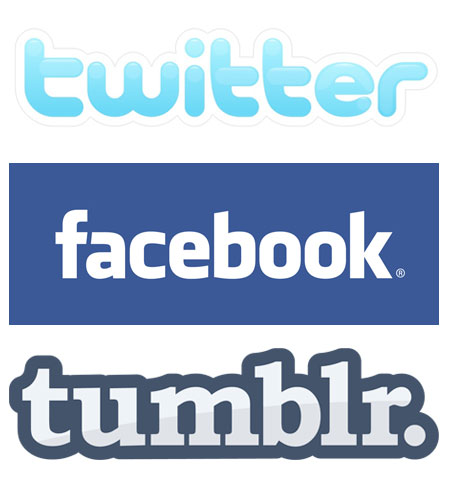7 Ways To Get Traffic To Your Blog Even If You Aren’t Updating It

Let’s be honest; there just isn’t enough time in the day anymore! No, we weren’t shorted any hours since, well, ever. But it seems like time is going so dang fast, and our to-do list stays a mile long. This has an effect on everything, including our blogging schedule.
I used to write only when “the spirit moved me”. But that wasn’t ideal. It had my readers wondering where I was for long periods of time. And it definitely made my traffic plummet because it was like a ghost town on my blog. Google likes for you to continuously update your site, so your content isn’t stale. But you don’t have to write a blog post every single day in order to get traffic.

Share Old Posts
If you’re sharing information that is still relevant, it’s called “evergreen content”. That means that as time goes on, you can still share it without people wondering why you’re talking about the good ol’ days. Sharing old posts can get you a huge bump in traffic. There are lots of plugins and SaaS (software as a service) that can help you do this easily. My favorites are CoSchedule and Buffer.
CoSchedule connects to your WordPress blog and your social networks. You can set it to repost your content just about whenever and wherever you’d like. When writing a new blog post, I tend to come up with this sharing schedule:
- As soon as it publishes: post on all networks
- Same day of publish: double up on Facebook and Twitter
- Day after publish: post again on Twitter saying something like “in case you missed it”
- 1 week from publish: repost everywhere again
- 1 month from publish: repost everywhere again

This keeps a steady flow of content on all your networks. We have to remember that not everyone is going to see your updates when you first post it. So you’re doing yourself and your readers a disservice by only sharing it once.
Buffer works as the Robin to CoSchedule’s Batman. You can schedule your posts to go live during times that the systems’ algorithms have decided will get you the most eyeballs. I also love Buffer because you can schedule retweets. If you see a cool post you want to RT but you don’t want to keep spamming people, Buffer will let you spread it out. This could include RTing people who have tweeted out your content. This shows that people like what you write, and it’s not just you.
Pin Pictures From Old Posts
Pinterest strategy is a tad different from the posting schedule above. Depending on how your boards are set up, Pinterest can give you a crazy boost of traffic on your old blog posts. More than likely, you don’t have a pinnable (preferably a longer, vertical image) for every blog post. If you do, then kudos for you! If you don’t, create one! It’s super simple to do in Canva or buy a template from a place like Creative Market.
You should have more than 1 board for the topics you cover on your blog. You should also have your Pinterest profile set as a business profile. Unless your niche is food blogging, fashion blogging, or wedding planning, your audience doesn’t really care about your personal boards.

I have 1 board where every single blog post goes that I publish on the blog. Then I have different boards set up by niche. So if I’m writing a blog post on gadgets, I’m going to pin it to my main blog board, and then pin it to my gadget board.
The nice thing is, Pinterest traffic is crazy! It’ll have you thinking you hit the Lotto. If you post at just the right time on just the right day, your old blog post can generate new eyes very quickly. All from the click of a button.
Related: How I Got 100,000 Pageviews from Pinterest in 3 Months
Refresh Your Blog Post’s SEO

My favorite plugin in WordPress has got to be Yoast SEO. It makes things supremely easy to make your content relevant to searches. One strategy that I have is going back to each blog post and making sure I have the SEO on point:
Choose a focus keyword
Yoast likes if each blog post has a different keyword, so it knows what the topic of your post is about.
Have the content be keyword rich
Keyword density is how many times your keyword is mentioned in the post. You don’t want it to read unnaturally for humans. But a good keyword rich blog post usually mentions the word about 3% of the time in the article. Yoast will help you by counting how many times you use it.
Write good meta descriptions
The meta description is such an overlooked part of SEO. It’s that 2 line snippet you see under the link in a Google search. I always read it to see if I’ll be wasting my time clicking on that link or not. This is also the description Facebook pulls when your link is shared. If your Facebook description sucks, you need to use Facebook debugger.

Format your posts properly
I’m an avid reader, so big blocks of text don’t scare me. But I’m the exception, not the rule. Your blog posts should be easy to consume quickly. Another honest moment here: how many times have you browsed through a post without reading it word for word? Exactly. You should ensure that it’s easy for people to speed read and still get value out of your content.
Update with new info
Remember how I said Google likes fresh content from regularly updated blogs? You can use the same blog post you poured your heart and soul into, and freshen it up a bit with new info. For example, our post on avoiding Wix websites was updated when Wix read the initial post, and wanted to defend themselves. When you update a post, your content gets new life.
When you include new info on your post, look for new developments on your topic, and maybe a new perspective from someone else. It’s up for debate in the blogger world whether or not you should update the date when you update the blog post. Some bloggers don’t even use dates on their posts.
You can also do a follow up post on the topic, and link back to the older article. I know, I know, that means you’re updating it. But it’s a great way to drive traffic for a post that might be far back in your archives.
Blogging has changed and will continue to evolve year after year. But the fact still remains: content is king, and the king needs some attention (traffic). You can just make a few tweaks along the way, and you can definitely get your old posts to work for you.






